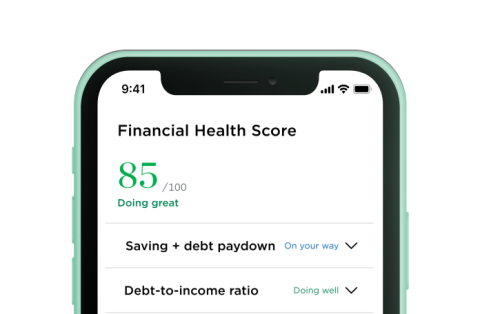Traditional IRA Withdrawal Rules

Many or all of the products featured here are from our partners who compensate us. This influences which products we write about and where and how the product appears on a page. However, this does not influence our evaluations. Our opinions are our own. Here is a list of our partners and here's how we make money.
The investing information provided on this page is for educational purposes only. NerdWallet, Inc. does not offer advisory or brokerage services, nor does it recommend or advise investors to buy or sell particular stocks, securities or other investments.
Tax-deferred accounts such as traditional IRAs come with a caveat: strict IRA distribution rules, both before and after retirement.
What are the traditional IRA distribution rules?
Traditional IRA withdrawal rules say that you can take money out of your traditional IRA at any time, but distributions taken before age 59 ½ will be taxed at ordinary income tax rates and penalized 10% for early withdrawal.
While you can’t avoid taxes on a traditional IRA distribution — no matter when you take it — there are exceptions that can help you avoid the 10% early withdrawal penalty.
(Note that Roth IRAs are different. If you have a Roth IRA rather than a traditional IRA, follow the Roth withdrawal rules instead.)
NerdWallet rating 4.9 /5 | NerdWallet rating 5.0 /5 | NerdWallet rating 4.1 /5 |
Fees $0 per online equity trade | Fees $0 per trade | Fees $0 per trade |
Account minimum $0 | Account minimum $0 | Account minimum $0 |
Promotion None no promotion available at this time | Promotion None no promotion available at this time | Promotion Get up to $700 when you open and fund a J.P. Morgan Self-Directed Investing account with qualifying new money. |
Which IRA withdrawals avoid the 10% penalty?
Birth or adoption of a child
In the year following the birth or adoption of your child, you can withdraw up to $5,000 without penalty. If married, each spouse can withdraw up to $5,000 from their own IRAs. The money can also be repaid into the retirement without counting toward the annual contribution limit for the year.
Death or total and permanent disability
If you become disabled, IRA distribution rules say you can tap traditional IRA funds without penalty. If you die, your account beneficiary or estate will be able to do so.
Disaster relief
Victims of federally declared disasters can make a withdrawal of up to $22,000 if they meet IRS qualifications.
Domestic abuse survival
People who have survived domestic abuse from a partner or spouse can take an IRA distribution of 50% of the account holdings or $10,000, whichever is less.
Emergency distribution
Account holders can make one withdrawal per year for a qualifying emergency, up to $1,000.
Home purchase
You can use up to $10,000 from your traditional IRA toward the purchase of your first home — and if you’re purchasing with a spouse, that goes for each of you.
The IRS’ definition of first home is pretty loose: You’re considered a first-time homebuyer under this rule if you or your spouse hasn’t owned a principal residence in the last two years. You must use the money within 120 days of the distribution, so time your withdrawal carefully.
This exception could also be used to purchase the first home for your or a spouse’s child, grandchild, parent or certain other relatives.
Medical expenses and health insurance premiums
You’re allowed an IRA distribution to pay for unreimbursed medical expenses that exceed 7.5% of your adjusted gross income. For example, if you make $100,000 and have $15,000 in unreimbursed medical costs, you can use IRA assets to pay for $7,500 of it.
You're also allowed to make IRA withdrawals to pay for health insurance premiums for you, your spouse or children when you are unemployed.
Qualified higher education expenses
IRA withdrawal rules allow you to use traditional IRA money to pay for higher education expenses not only for yourself, but also for immediate family members. Expenses that fall under this rule include tuition, fees, books and supplies.
Qualified reservist distributions
If you’re in the military and you are called to active duty for more than 179 days, you can take a penalty-free distribution from your IRA. The withdrawal must be made during the period of active duty; in other words, you can’t take it earlier than the date of the call to serve, or later than the close of the active-duty period.
Rollovers
If you want to transfer money from one IRA to another IRA or other qualified retirement plan, you have 60 days to deposit the money without paying the 10% penalty.
Substantially equal payments
You don’t have to pay the 10% penalty if you start a series of distributions from your IRA that are spread equally over your life expectancy.
The fine print: If you turn this fire hose on, you can’t turn it back off — you must take at least one distribution each year, and you can’t modify the schedule of payments until five years have passed or you’ve reached age 59 ½, whichever is later.
The amount of the distributions must be based on an IRS-approved calculation that involves your life expectancy, your account balance and interest rates.

Get a custom financial plan and unlimited access to a Certified Financial Planner™
NerdWallet Advisory LLC
What is an IRA required minimum distribution?
An IRA required minimum distribution is the amount the IRS requires you to withdraw from your account once you reach a certain age. These distributions, commonly called RMDs, start at age 73 for those who turn 72 after Dec. 31, 2022. In 2033, the age to begin taking RMDs will rise to 75.
These distributions are required because the money in your account grew tax-free, and the IRS will only let you defer taxes for so long. RMDs are taxed as ordinary income, and you can withdraw more than the required amount if you choose. The amount of the RMD is calculated by dividing your account balance by a life expectancy factor published by the IRS.
If you don't take these distributions, or if you don't withdraw enough, you may be subject to a 25% tax on the money you didn't withdraw. If you correct your RMDs within two years, you may be able to get the tax lowered to 10%. For amounts and RMD tables, see our full guide on required minimum distributions.
Finally, if you’re between 59 ½ and your RMD age, you’re in that sweet spot when you can do what you want — you don’t have to take distributions from the account, and leaving that money invested can allow it to continue to grow tax-deferred. If you do want to begin distributions, you can. You’ll pay taxes, but no penalty.

On a similar note...










